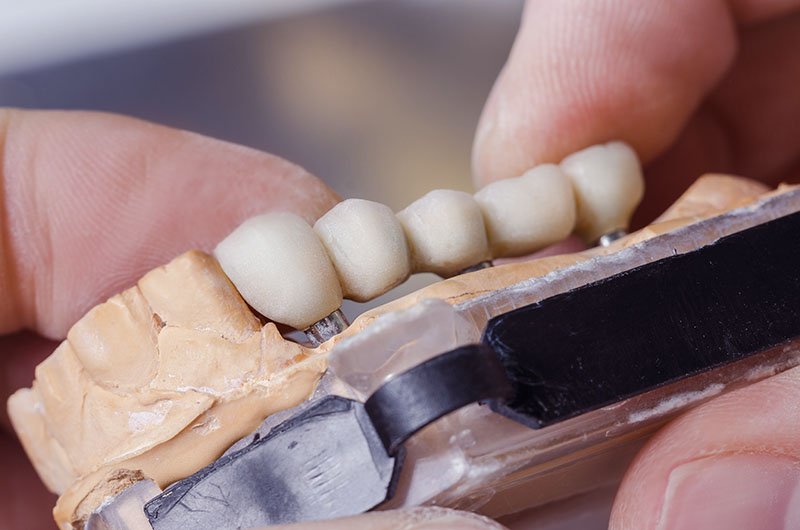
There are many ways to replace missing teeth & restore your smile, & bridges are a good permanent solution. They can replace one or more missing teeth, including molars, & cannot be removed, unlike dentures.
Bridges are called bridges because they create a “bridge” between teeth. The false tooth, called a pontic, is connected to the surrounding existing teeth or implants. The teeth or implant where the bridge is attached is called an abutment.
There are four major types of bridges:
1. Traditional Bridges
Traditional bridges are held in place by dental crowns placed over the two existing teeth on either side of the gap. That means that for this type of bridge, there must be natural teeth on both sides of the gap. Your dentist will file down the existing teeth to place a crown over them so that the bridge can be attached to these new crowns.
2. Cantilever Bridges
In cantilever bridges, the pontic is only supported by one crown, instead of two. These are not as popular because sometimes the bridge can act as a lever & can have complications, like fractured teeth or loosened crowns.
3. Maryland Bridges
In Maryland bridges, the pontic is held in place by a metal or porcelain framework that is bonded to the back of the surrounding teeth, kind of like little wings. This type of bridge is nice because your surrounding teeth don’t need to be filed down.
4. Implant-Supported Bridges
These bridges are useful when more than one tooth is missing. An implant is placed for every missing tooth, & a bridge is attached to the new implants. If an implant can’t be placed for every tooth, then a pontic can be suspended between two surrounding implant crowns instead. These bridges take a bit longer, since implants can take up to five months to place.
Bridges are a long-lasting way to restore your smile & prevent other dental health problems, like bad bites, gum disease & TMJ disorders. Bridges can last up to 10 years with proper care, so practice good oral hygiene to keep your teeth & gum free of decay, & avoid eating hard foods & ice. Keep your bridges clean with proxy brushes, floss threaders & antibacterial mouthwash, & by flossing underneath the false tooth.
Talk to your dentist to find out if dental bridges are right for your smile!



